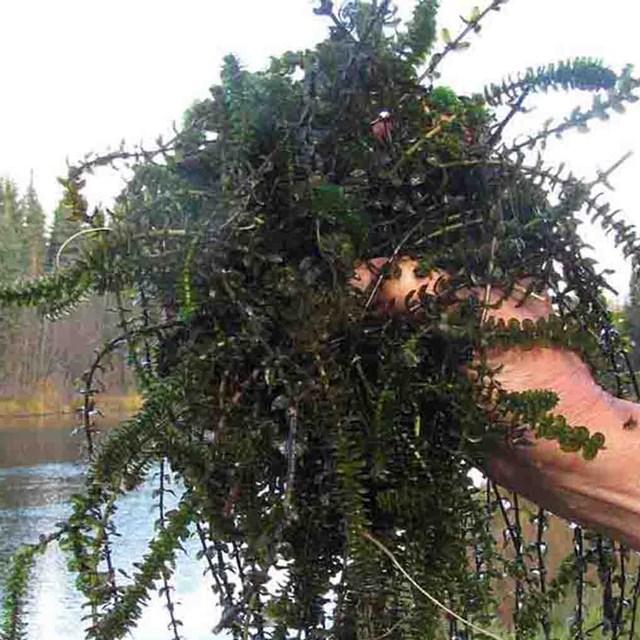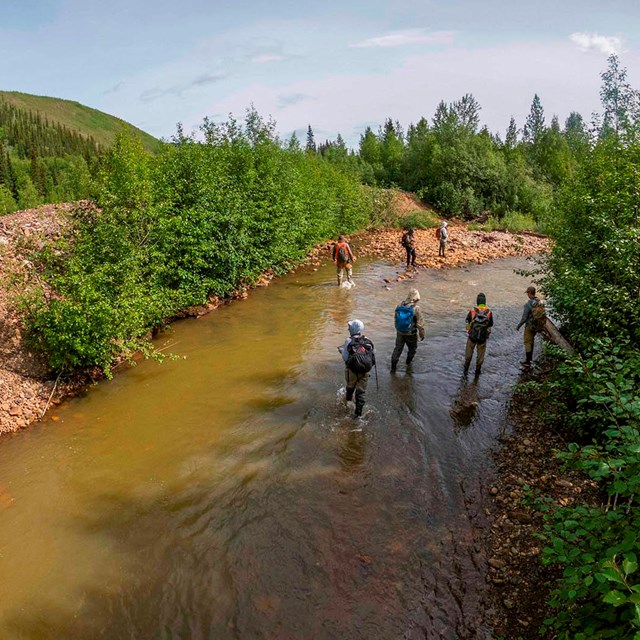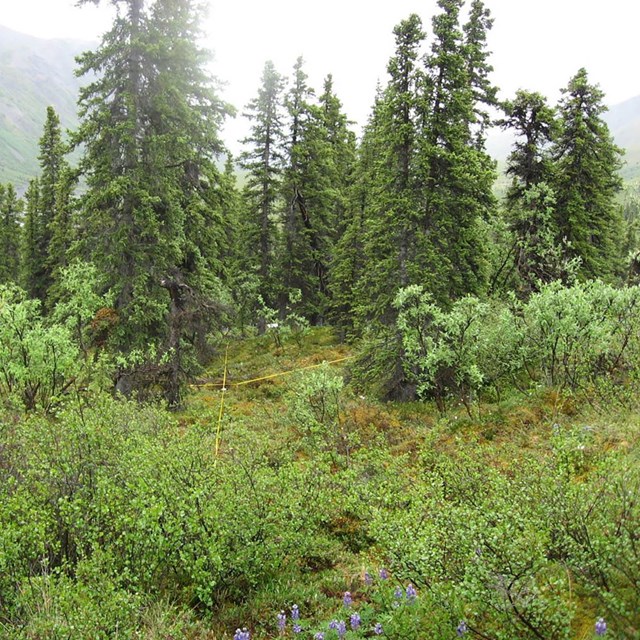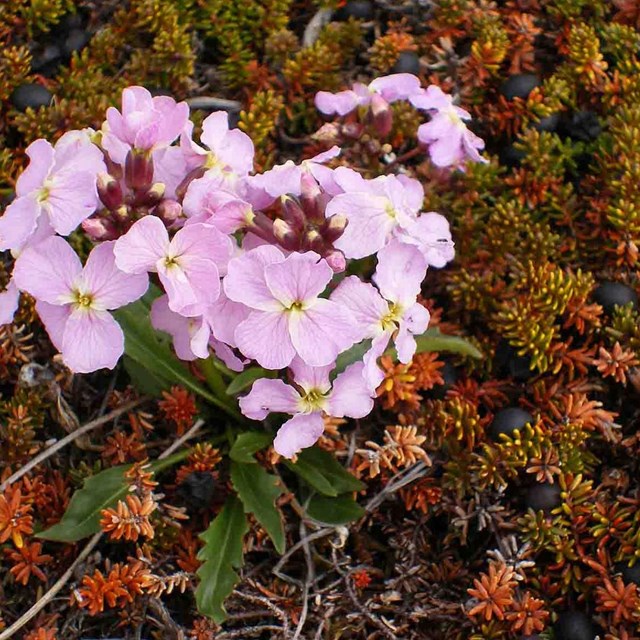
Alaska can be generalized into a few zones characterized by the climate, vegetation, and other physical factors, which determine the biological communities found there. [Learn more about the ecoregions of Alaska.]
Arctic and Subarctic
The Arctic and subarctic tundra is characterized by aridity, brief summer with long hours of daylight, and treeless landscape. Sea ice extent is a primary influence on climate patterns in coastal areas of the Arctic. Permafrost underlies most of the northern tundra. Most plants grow low to the ground; lichens are particularly important, as well as mosses, sedges, and grasses. Animals that live there, from insects to muskoxen, are adapted to the particular harsh weather conditions.
Boreal
The boreal region, also known as taiga, of interior Alaska is diverse in its expression. It is characterized by the most extreme temperature variability--hot summers and cold winters--and low amounts precipitation. Permafrost is primarily non-continuous in this region. Black spruce and white spruce are the most common conifers; poplar, birch, aspen, willow, and alder are the most common deciduous trees and shrubs; the understory is a thick mat of mosses, lichens, sedges, grasses, and berries. Fire shapes this landscape, contributing to the mosaic of tree and shrub growth, along with meadows, marshes, lakes, and braided rivers.
Coastal
The coastal mountain region of Alaska is heavily influenced by the ocean. The maritime climate is milder in the winter and cooler in the summer, giving it the smallest annual temperature range in the state. This region experiences more precipitation (rain and snow) and the vegetation responds with bigger trees and lush understory. Conifers are prevalent, including Sitka spruce, western hemlock, western red cedar, and yellow cedar. This landscape is also shaped by glaciers and have numerous fjords and rivers with sea-run fisheries. Wind is a primary disturbance of these ecosystems along the coast, as well as landslides, avalanches, and floods associated with glaciers.
Transitional climate regions lie between the coast and the interior influenced by major mountain ranges, which act not only as the environmental controls to drive climate, but also contribute to the highly localized micro-climates found in complex mountain terrain. The climate gradients are intrinsic to the ecosystem patterns, vegetation, and wildlife communities found in Alaska parks.
-
 Invasive Species
Invasive SpeciesInvasive species threaten Alaska's native species and ecosystems.
-
 Southwest Alaska Lichen Inventory
Southwest Alaska Lichen InventoryLichens are an important part of Alaska's ecosystems. Learn more about new species found in southwest Alaska.
-
 Restoration Projects
Restoration ProjectsLearn more about ongoing projects that will restore damaged and degraded freshwater systems in Alaska.
-
 vegetation monitoringCentral Alaska Network
vegetation monitoringCentral Alaska NetworkCentral Alaska parks have more than 2,000 species of plants, including vascular plants, bryophytes, and lichens.
-
 vegetation monitoringArctic Network
vegetation monitoringArctic NetworkIn addition to vascular plants such, the Arctic has abundant lichens that provide wildlife forage and are a component of biodiversity.
-
 vegetation monitoringSouthwest Alaska Network
vegetation monitoringSouthwest Alaska NetworkBecause vegetation responds directly to environmental drivers, it serves as a useful indicator of environmental change.
Last updated: April 3, 2024
